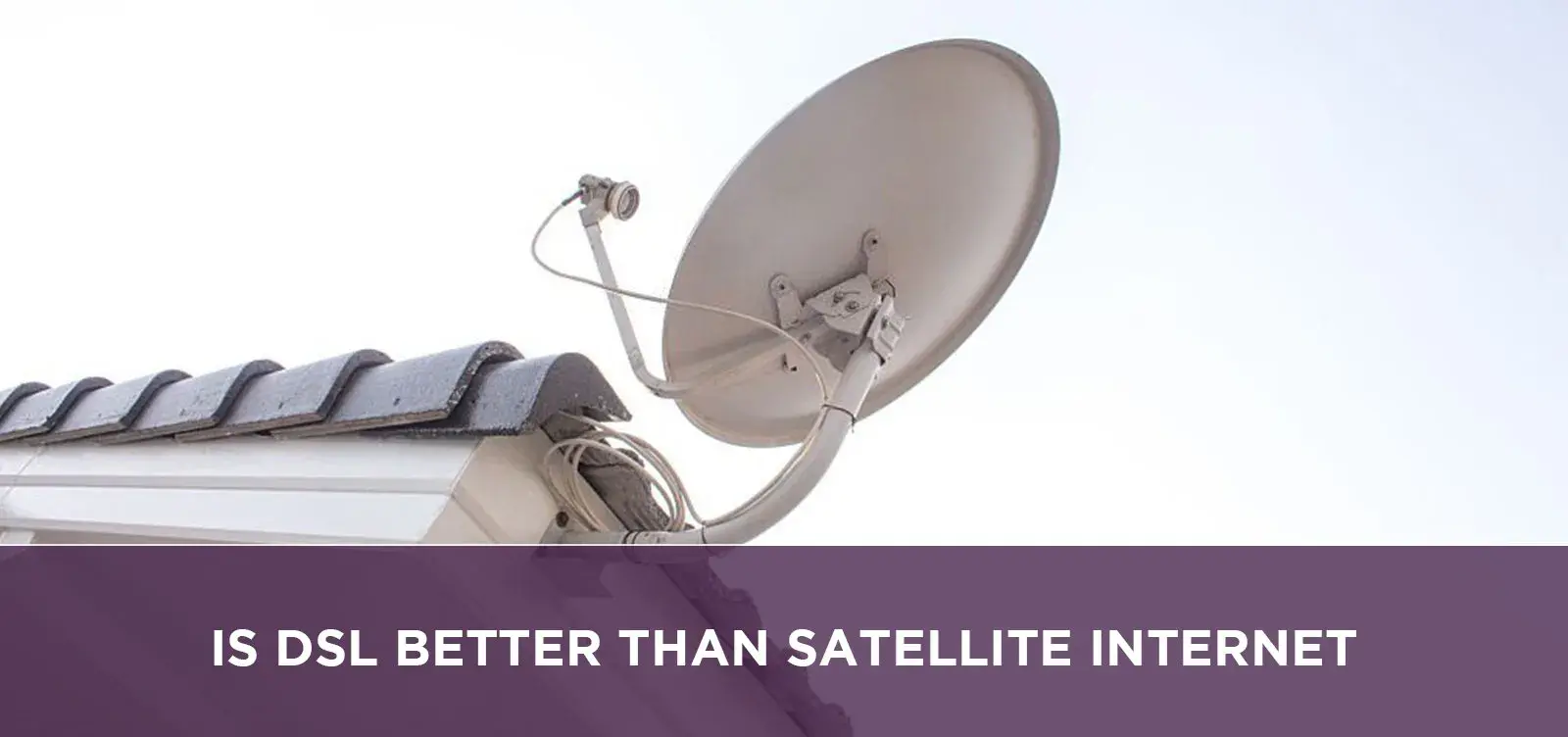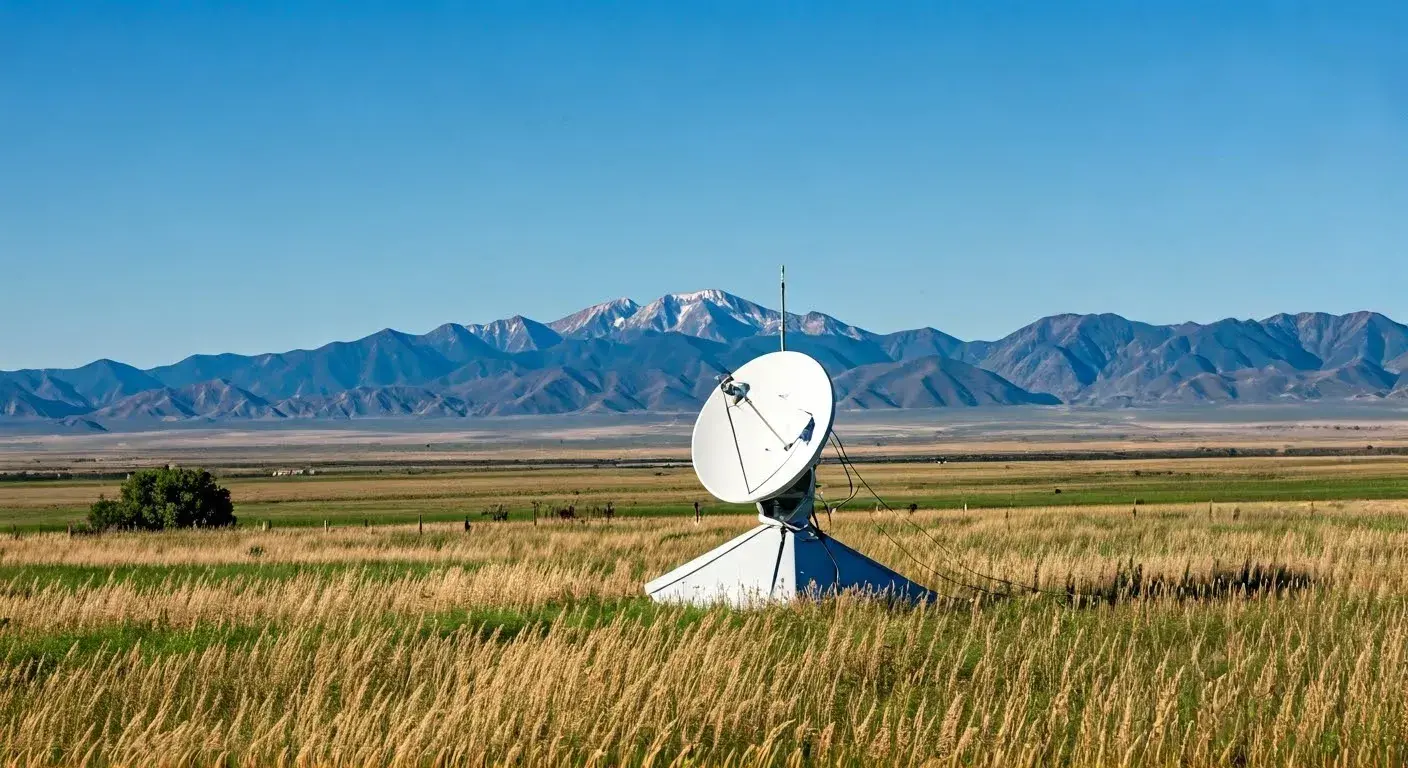-
Posted on: 14 Oct 2023

-
Introduction
In today’s digital world, a reliable and fast internet connection is essential for work, education, entertainment, and staying connected. However, choosing the right internet service can be challenging, especially in rural or remote areas where options are limited. Two common choices are DSL (Digital Subscriber Line) and satellite internet, each with distinct strengths and weaknesses. As of August 5, 2025,
Understanding DSL Internet
How DSL Works
DSL, or Digital Subscriber Line, delivers broadband internet through existing copper telephone lines. It uses different frequencies for voice and data, allowing simultaneous phone and internet use without interference. DSL connects your home to the internet via a modem plugged into a phone line, with speeds varying based on your distance from the provider’s central office or hub.
Pros of DSL Internet
-
Widespread Availability: DSL is accessible in many urban and suburban areas with telephone infrastructure, covering millions of households across the U.S.
-
Lower Latency: With latency typically between 20-50 milliseconds (ms), DSL is suitable for real-time applications like online gaming, video conferencing, and VoIP calls.
-
Cost-Effective: DSL plans often start at $20-$30 per month, making them more affordable than satellite options.
-
Weather-Resistant: As a wired connection, DSL is unaffected by weather conditions like rain or snow, ensuring consistent performance.
-
Unlimited Data Options: Many DSL providers, such as CenturyLink, offer plans with no data caps, ideal for heavy internet users.
Cons of DSL Internet
-
Speed Variability: Speeds range from 1.5 Mbps to 100 Mbps, but performance drops significantly the farther you are from the provider’s hub.
-
Limited Rural Reach: DSL requires telephone infrastructure, which may not exist in very rural or remote areas.
-
Potential Outages: While rare, DSL can be affected by line damage from construction or severe storms.
Understanding Satellite Internet
How Satellite Internet Works
Satellite internet delivers connectivity via signals transmitted between a satellite dish at your home and orbiting satellites, which connect to a ground station linked to the internet. Traditional providers like HughesNet and Viasat use geostationary (GEO) satellites, orbiting 22,000 miles above Earth, while newer providers like Starlink use low Earth orbit (LEO) satellites, closer to the planet, for improved performance.
Pros of Satellite Internet
-
Near-Universal Availability: Satellite internet is accessible anywhere with a clear view of the sky, making it ideal for rural and remote areas where DSL is unavailable.
-
High Speeds with LEO: Providers like Starlink offer speeds up to 270 Mbps, while traditional providers like HughesNet and Viasat provide 25-100 Mbps.
-
No Infrastructure Dependency: Satellite doesn’t rely on ground-based cables, offering flexibility in areas lacking telephone or fiber lines.
-
Quick Deployment: Satellite can be set up relatively quickly, providing immediate connectivity in underserved regions.
Cons of Satellite Internet
-
Higher Costs: Plans start at $50-$100 per month, with equipment costs (dish and modem) ranging from $100-$500.
-
Weather Sensitivity: Heavy rain, snow, or obstructions like trees can cause signal disruptions, known as rain fade.
-
High Latency: Traditional satellite internet has latency of 600-900 ms, impacting real-time applications. LEO satellites reduce this to ~45 ms.
-
Data Caps: Most plans have data limits (10-50 GB), with throttling to 1-2 Mbps after exceeding them.
Detailed Comparison of DSL and Satellite Internet
To determine which is better, let’s compare DSL and satellite internet across critical factors:
1. Speed
-
DSL: Speeds range from 1.5 Mbps to 100 Mbps, depending on proximity to the provider’s hub. For example, CenturyLink offers DSL plans up to 100 Mbps in urban areas, but rural users may see speeds as low as 1.5 Mbps due to distance-related signal degradation.
-
Satellite: Traditional providers like HughesNet offer up to 100 Mbps, while Viasat reaches 150 Mbps. Starlink’s LEO satellites can deliver up to 270 Mbps. However, actual speeds may drop to 5-15 Mbps during peak hours or bad weather for traditional providers.
Winner: Tie. DSL is faster in urban areas with good infrastructure, while satellite, especially LEO, excels in rural areas with higher potential speeds.
2. Reliability
-
DSL: As a wired connection, DSL is highly reliable and unaffected by weather. It maintains consistent performance unless there’s physical damage to telephone lines.
-
Satellite: Susceptible to weather-related disruptions (rain fade) and obstructions like trees or buildings, which can weaken or interrupt signals.
Winner: DSL, for its weather-resistant, stable connection.
3. Cost
-
DSL: Plans typically start at $20-$30/month (e.g., CenturyLink’s Simply Unlimited Internet at $55/month for up to 140 Mbps). Modems cost $50-$100 or can be rented for $5-$10/month.
-
Satellite: Plans start at $39.99-$100/month (e.g., HughesNet at $39.99/month for 100 Mbps, Starlink at $120/month). Equipment costs range from $100-$599, with installation fees of $0-$200.
Winner: DSL, for lower monthly fees and minimal equipment costs.
4. Availability
-
DSL: Available in areas with telephone lines, covering 5,712 zip codes in the U.S. (e.g., Kinetic by Windstream). However, it’s limited in very rural areas.
-
Satellite: Accessible nearly everywhere with a clear sky view, ideal for remote locations where DSL isn’t an option.
Winner: Satellite, for its near-universal coverage.
5. Latency
-
DSL: Latency of 20-50 ms supports real-time applications like gaming and video calls.
-
Satellite: Traditional GEO satellites have high latency (600-900 ms), while LEO satellites like Starlink reduce this to ~45 ms, still slightly higher than DSL.
Winner: DSL, though LEO satellites are closing the gap.
6. Data Caps
-
DSL: Many providers offer unlimited data plans, though some lower-tier plans may have caps.
-
Satellite: Most plans have data caps (10-50 GB for HughesNet, Viasat), with throttling to 1-2 Mbps after exceeding limits. Starlink offers unlimited data but may throttle during congestion.
Winner: DSL, for more unlimited data options.
7. Ease of Setup
-
DSL: Requires a modem and may need professional line checks, typically taking 1-2 hours.
-
Satellite: Requires a dish and modem, often needing professional installation (2-3 hours) for precise alignment. Starlink offers DIY kits.
Winner: Tie, as both may require professional setup.
Factor
DSL
Satellite
Winner
Speed
1.5-100 Mbps
25-270 Mbps (5-15 Mbps actual)
Tie
Reliability
Weather-resistant, stable
Affected by weather, obstructions
DSL
Cost
$20-$30/month, low equipment costs
$50-$100/month, $100-$500 equipment
DSL
Availability
Limited to telephone infrastructure
Near-universal with clear sky view
Satellite
Latency
20-50 ms
600-900 ms (GEO), ~45 ms (LEO)
DSL
Data Caps
Often unlimited
10-50 GB, throttling after
DSL
Setup
Modem, possible pro install
Dish, often pro install
Tie
When to Choose DSL Over Satellite
-
Urban/Suburban Areas: If DSL is available, it’s often the better choice due to lower costs, lower latency, and reliability. For example, a small business owner in a suburban area might choose DSL for consistent video calls and file transfers.
-
Real-Time Applications: Gamers or remote workers needing low latency for gaming or video conferencing will benefit from DSL’s 20-50 ms latency.
-
Budget Constraints: DSL’s lower monthly fees and minimal equipment costs make it ideal for cost-conscious users.
-
Unlimited Data Needs: DSL’s unlimited data plans suit heavy users who stream or download frequently.
When to Choose Satellite Over DSL
-
Rural/Remote Areas: If DSL isn’t available, satellite is often the only high-speed option. For instance, a farmer in a remote area might rely on Starlink for online schooling and work.
-
Immediate Connectivity: Satellite can be set up quickly without waiting for infrastructure, ideal for urgent needs.
-
High-Speed Requirements: Starlink’s speeds up to 270 Mbps are attractive for rural users needing faster connections than DSL can offer.
Future Trends
The internet landscape is evolving rapidly. LEO satellite constellations, like Starlink’s 7,000+ satellites, are transforming satellite internet with speeds up to 270 Mbps and latency as low as 45 ms, rivaling terrestrial connections. Meanwhile, DSL providers are upgrading to fiber in some areas, offering gigabit speeds. Government initiatives, like the FCC’s rural broadband investments, are expanding infrastructure, potentially increasing DSL’s reach. Emerging options like 5G home internet and fixed wireless are also gaining traction, offering alternatives to both DSL and satellite.
Conclusion
Choosing between DSL and satellite internet hinges on your location, budget, and internet needs. DSL is often the better choice in urban or suburban areas due to its lower cost, lower latency, and weather-resistant reliability. For rural or remote users, satellite internet, particularly LEO-based services like Starlink, provides critical connectivity where DSL isn’t available. By weighing factors like speed, reliability, cost, and availability, you can select the best option for your household. Check availability with providers like CenturyLink (1-800-201-4099) or HughesNet (1-866-482-1777) to explore plans tailored to your area.
FAQs
1. Is DSL faster than satellite internet?
DSL speeds range from 1.5-100 Mbps, while satellite speeds can reach 25-270 Mbps (e.g., Starlink). However, satellite’s actual speeds may drop to 5-15 Mbps during peak times or bad weather, making DSL faster in urban areas with good infrastructure.
2. Which is more reliable, DSL or satellite?
DSL is more reliable due to its wired connection, unaffected by weather. Satellite can face disruptions from rain, snow, or obstructions, though LEO systems are more resilient.
3. Is satellite internet more expensive than DSL?
Yes, satellite plans start at $50-$100/month with equipment costs of $100-$500, compared to DSL’s $20-$30/month and minimal equipment costs.
4. Can I get DSL in rural areas?
DSL requires telephone infrastructure, so availability in rural areas varies. Check with providers like CenturyLink (www.centurylink.com) to confirm.
5. Does satellite internet have higher latency than DSL?
Traditional satellite internet has higher latency (600-900 ms) than DSL (20-50 ms). LEO satellites like Starlink reduce this to ~45 ms, but DSL remains better for real-time tasks.
6. Are there data caps on DSL and satellite internet?
Satellite plans often have data caps (10-50 GB), with throttling after exceeding limits. DSL plans vary, with many offering unlimited data.
7. How easy is it to set up DSL vs. satellite?
Both may require professional installation. DSL needs a modem and line checks, while satellite requires precise dish alignment, often by a technician.
-





